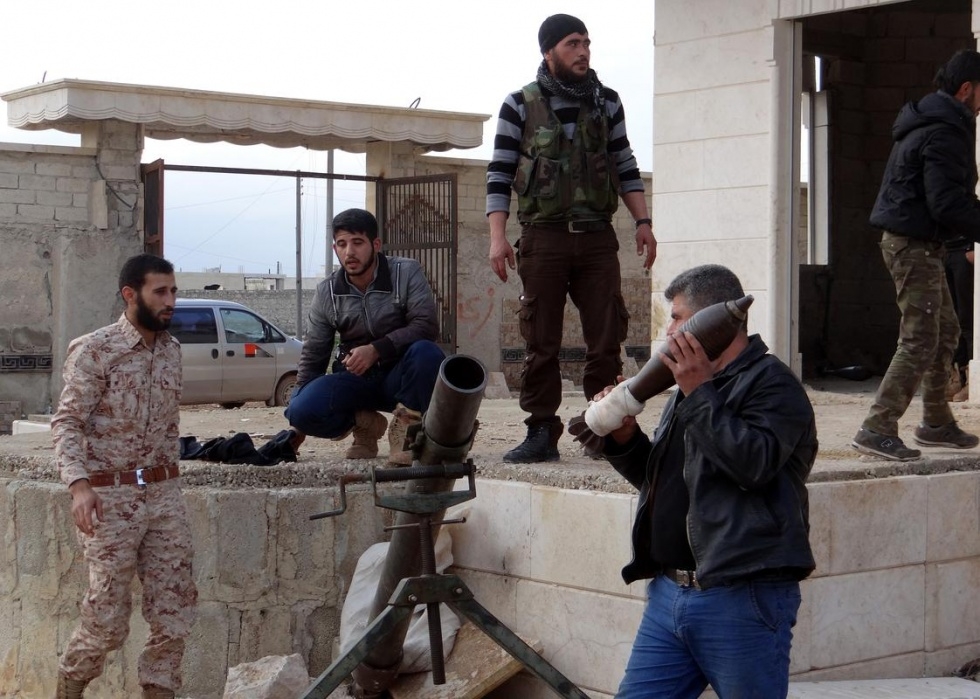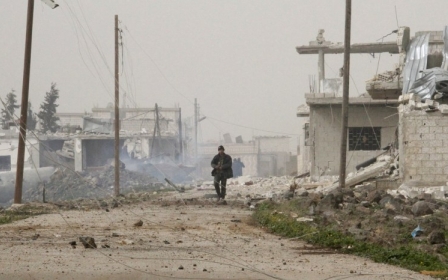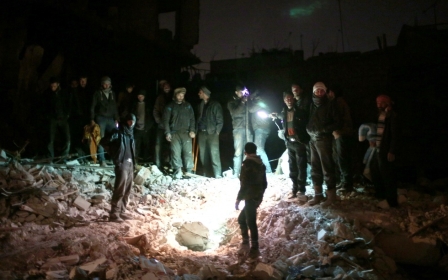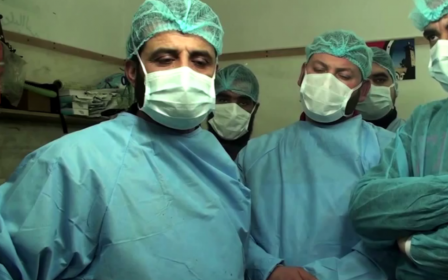Syrian government troops launch a new offensive on Aleppo

Syrian government troops began a new offensive around the northern city of Aleppo on Tuesday, attacking a string of villages in an attempt to encircle rebel fighters, a monitor said.
The Britain-based Syrian Observatory for Human Rights monitor group said government troops had seized two villages north of Aleppo to the border with Turkey.
At least 12 rebels were killed in the fighting for the villages, the Observatory said, adding that the clashes had stopped traffic on the key highway.
As they launched the attacks, government forces also began shelling two towns on the road to Nubol and Zahraa, both government-held Shiite villages.
Nubol and Zahraa had been under rebel siege for more than 18 months, and pro-government militants inside the villages have repelled several attacks.
The offensive comes the same day that UN peace envoy Staffan De Mistura is to address the Security Council on his efforts, including a plan to “freeze” fighting in Aleppo that has so far failed to gain traction.
“The regime troops have two goals in the area: to cut the road leading from Aleppo to the Turkish border, which is the key supply road for the rebels, and to open the way to Nubol and Zahraa,” Observatory director Rami Abdel Rahman said.
The offensive in northern Aleppo province was also accompanied by renewed fighting inside Aleppo city, which is divided between rebels and forces loyal to the government of Bashar al-Assad's control.
The Observatory reported fierce clashes in several parts of the government-controlled west of the city, where at least six rebels were killed.
Rebel rocket fire into several western neighbourhoods also killed eight civilians, the monitor said, among them a child.
The latest episode of violence follows through from Monday, where rebel fire killed nine people in the Hay al-Seryan neighbourhood in the government-controlled west Aleppo.
SANA, Syria’s state news agency, reported that three children among the nine were killed. The Syrian Observatory for Human Rights added that 20 other people were injured.
Aleppo divided
Aleppo, which is Syria’s largest city and used to be known as its industrial capital, has been split between rebel controlled areas in in the east and Assad controlled areas in the west since shortly after fighting began there in mid-2012.
In the surrounding countryside the situation is largely the reverse, with rebels controlling much of the area west of the city and Assad forces much of the east.
Government forces advanced around the east of the city last year, but the front lines had been relatively static in recent weeks.
On Monday, the Observatory reported an influx of government reinforcement and the Syrian daily al-Watan, which is close to the government, said its forces planned to encircle the city in a new offensive.
“Aleppo is very important for us,” a Syrian military source told AFP on Tuesday.
“The main goals are to break the siege of Aleppo and open the road to Nubol and Zahraa,” he added.
Government troops are engaged in a battle to seize control of the key highway that leads from east Aleppo to the Turkish border - the rebels’ main supply line.
The new offensive comes shortly after government forces opened a new front in southern Deraa province and also began launching a string of attacks on rebel-held areas outside Damascus.
“This military operation in Aleppo proves the ability of the Syrian army to open multiple fronts at once,” the military source said.
Envoy to brief UN
The latest Aleppo offensive began less than a day before UN envoy De Mistura prepared to address the Security Council.
He has advanced a plane for a “freeze” to the fighting in Aleppo, in a bid to ease the humanitarian situation and provide an example for ceasefires elsewhere.
But the proposal has gained little traction, and De Mistura drew criticism from the opposition last week after describing Syria’s President Bashar al-Assad as “part of the solution” to the conflict.
The rebels and opposition insist Assad’s departure is a precondition for resolving the country’s brutal war, which began in March 2011 with peaceful anti-government protests.
These spiralled into a civil conflict after a government crackdown, and the violence has killed more than 210,000 people. Millions more have either been internally displaced or made refugees.
Middle East Eye propose une couverture et une analyse indépendantes et incomparables du Moyen-Orient, de l’Afrique du Nord et d’autres régions du monde. Pour en savoir plus sur la reprise de ce contenu et les frais qui s’appliquent, veuillez remplir ce formulaire [en anglais]. Pour en savoir plus sur MEE, cliquez ici [en anglais].




